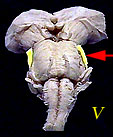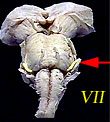There are a number of unique and distinctive branches of psychology. Each branch looks at questions and problems from a different perspective. While each branch has its own focus on psychological problems or concerns, all areas share a common goal of studying and explaining human thought and behavior. The following are some of the major branches of psychology within the field today.
1. Abnormal Psychology
Abnormal psychology is the area that looks at psychopathology and abnormal behavior. The term covers a broad range of disorders, from depression to obsession-compulsion to sexual deviation and many more. Counselors, clinical psychologists and psychotherapists often work directly in this field.Sponsored Links
Emotions And DiabeteFree Video Stories From Diabetics: Learn To Feel Better With DiabetesChangingMyDiabetes.com/Emotions
2. Behavioral Psychology
Behavioral psychology, also known as behaviorism, is a theory of learning based upon the idea that all behaviors are acquired through conditioning. While this branch of psychology dominated the field during the first part of the twentieth century, it became less prominent during the 1950s. However, behavioral techniques remain a mainstay in therapy, education and many other areas.3. Biopsychology
The branch of psychology focused on the study of how the brain influences behavior is often known as biopsychology, although it has also been called physiological psychology, behavioral neuroscience and psychobiology.4. Cognitive Psychology
Cognitive psychology is the branch of psychology that focuses on internal states, such as motivation, problem solving, decision-making, thinking and attention. This area of psychology has continued to grow since it emerged in the 1960s.5. Comparative Psychology
Comparative psychology is the branch of psychology concerned with the study of animal behavior. The study of animal behavior can lead to a deeper and broader understanding of human psychology.6. Developmental Psychology
This branch of psychology looks at development throughout the lifespan, from childhood to adulthood. The scientific study of human development seeks to understand and explain how and why people change throughout life. This includes all aspects of human growth, including physical, emotional, intellectual, social, perceptual and personality development. Topics studied in this field include everything from prenatal development to Alzheimer's disease.7. Educational Psychology
Educational psychology is the branch of psychology concerned with schools, teaching psychology, educational issues and student concerns. Educational psychologists often study how students learn or work directly with students, parents, teachers and administrators to improve student outcomes.8. Experimental Psychology
Experimental psychology is the branch of psychology that utilizes scientific methods to research the brain and behavior. Many of these techniques are also used by other areas in psychology to conduct research on everything from childhood development to social issues.Sponsored Links
Online PhD DegreeLeading Swiss Business University. Top Ranked, Prestigious, Flexible.www.swissmc.ch
DNA Sequencing SoftwareUser-friendly, Integrated, Advanced Try A Fully Functional Demo!www.clcbio.com
















 Still can't remember the cranial nerves? Perhaps you need some
Still can't remember the cranial nerves? Perhaps you need some 

 The organs (the "viscera") of our body, such as the heart, stomach and intestines, are regulated by a part of the nervous system called the
The organs (the "viscera") of our body, such as the heart, stomach and intestines, are regulated by a part of the nervous system called the  and
and


 Suddenly, an angry bear appears in your path. Do you stay and fight OR do you turn and run away? These are "Fight or Flight" responses. In these types of situations, your sympathetic nervous system is called into action - it uses energy - your blood pressure increases, your heart beats faster, and digestion slows down. Notice in the picture on the left that the sympathetic nervous system originates in the spinal cord. Specifically, the cell bodies of the first neuron (the preganglionic neuron) are located in the thoracic and lumbar spinal cord. Axons from these neurons project to a chain of ganglia located near the spinal cord. In most cases, this neuron makes a
Suddenly, an angry bear appears in your path. Do you stay and fight OR do you turn and run away? These are "Fight or Flight" responses. In these types of situations, your sympathetic nervous system is called into action - it uses energy - your blood pressure increases, your heart beats faster, and digestion slows down. Notice in the picture on the left that the sympathetic nervous system originates in the spinal cord. Specifically, the cell bodies of the first neuron (the preganglionic neuron) are located in the thoracic and lumbar spinal cord. Axons from these neurons project to a chain of ganglia located near the spinal cord. In most cases, this neuron makes a 

 This time, however, you decide to relax in comfortable chair that you have brought along. This calls for "Rest and Digest" responses. Now is the time for the parasympathetic nervous to work to save energy - your blood pressure decreases, your heart beats slower, and digestion can start. Notice in the picture on the left, that the cell bodies of the parasympathetic nervous system are located in the spinal cord (sacral region) and in the
This time, however, you decide to relax in comfortable chair that you have brought along. This calls for "Rest and Digest" responses. Now is the time for the parasympathetic nervous to work to save energy - your blood pressure decreases, your heart beats slower, and digestion can start. Notice in the picture on the left, that the cell bodies of the parasympathetic nervous system are located in the spinal cord (sacral region) and in the 
